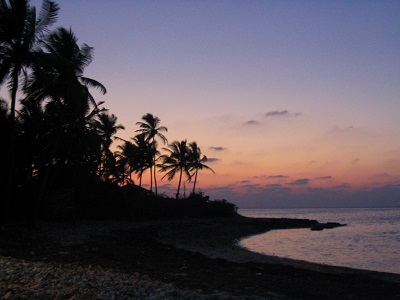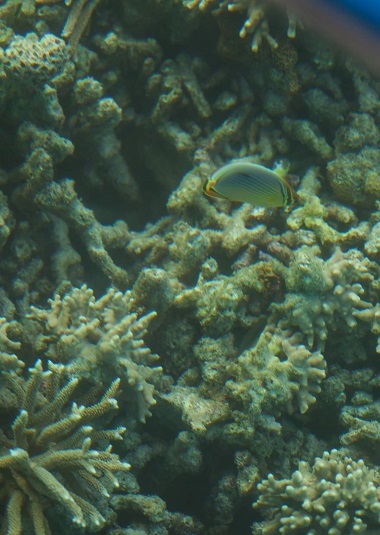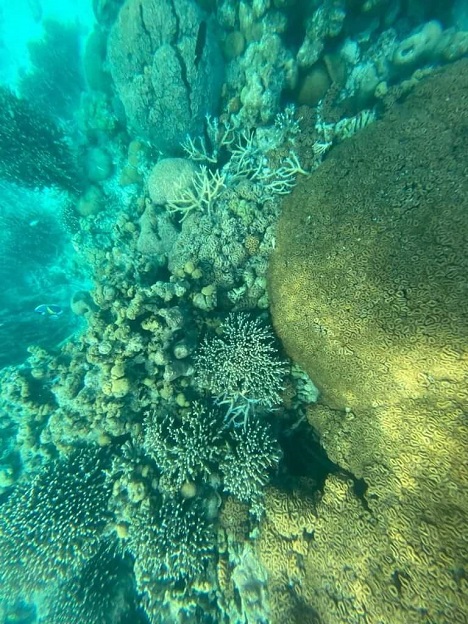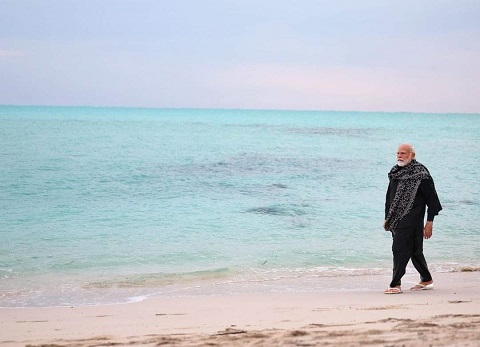India’s captivating island destinations, where a visionary strategy is seamlessly weaving together maritime infrastructure development, strategic island initiatives, and an ambitious plan for tourism expansion. Led by Prime Minister Narendra Modi’s unwavering commitment, this comprehensive approach focuses on lesser-known paradises like the Andaman & Nicobar Islands and Lakshadweep. As these hidden gems emerge into the spotlight, our tourism magazine invites you to explore the unique blend of history, culture, and pristine landscapes, witnessing a transformative era in India’s island tourism.
Comprehensive Strategy for Island Development:
India is embarking on a visionary strategy that seamlessly integrates the development of maritime infrastructure, the Indian Island development blueprint, and an ambitious plan for stimulating growth in the tourism sector. This holistic initiative is strategically targeting 26 islands, with a primary focus on lesser-known destinations along the coastal belt, particularly centered in the Andaman and Nicobar Islands and Lakshadweep. The overarching objective is to align these efforts with the government’s broader vision for holistic and sustainable development.
Prime Minister’s Commitment to Holistic Vision:
In response to this integrated developmental approach, the Prime Minister’s Office (PMO) has underscored Prime Minister Narendra Modi’s unwavering commitment to a comprehensive vision. This vision encompasses not only the enhancement of maritime infrastructure but also strategic island development and the fostering of a flourishing tourism sector. The blueprint entails a multifaceted development plan, including the construction or improvement of basic infrastructure, tourism promotion, organic agriculture, fisheries, and the adoption of carbon-neutral energy generation through renewable sources.
Historical Tourism Challenges and Initiatives:
Despite the inherent potential, the Andaman & Nicobar Islands and Lakshadweep have historically faced challenges, such as limited tourism, owing to issues like inadequate connectivity, deficient infrastructure, and insufficient promotional efforts. Recognizing the imperative for comprehensive development, the Ministry of Tourism initiated a Rs. 42.19 crore project in 2016-17 for tourism infrastructure development in Andaman & Nicobar. However, significant investments in core infrastructure, accommodation, and promotion are still essential to fully unlock the growth potential, drawing inspiration from successful island destinations like Maldives, Seychelles, and Mauritius.
Integrated Island Development Agency:
The Island Development Agency, in collaboration with NITI Aayog, is at the forefront of spearheading this integrated initiative, ensuring a cohesive and sustainable developmental approach. Ongoing projects, including air and sea connectivity, road infrastructure, and digital connectivity, are integral components of this comprehensive strategy.
Geopolitical Significance of Indian Islands:
With the clear integration of maritime infrastructure development, the Indian Island development blueprint, and the plan for tourism sector expansion, India’s island territories are poised for exponential growth. Collaborative efforts between the government and the private sector are expected to transform Andaman & Nicobar Islands and Lakshadweep into world-class tourism destinations, contributing significantly to economic growth and job creation.
Balancing Economic Growth and Ecological Sensitivity:
However, challenges and concerns persist, and the success of this integrated strategy hinges on addressing them effectively. The actual development work on the ground must consider the unique environmental conditions of each island. Ensuring seamless connectivity between these islands and the mainland is paramount. The government’s holistic approach not only focuses on creating tourist-friendly facilities but also addresses broader developmental aspects such as agriculture and sustainable energy generation.
The Geographical Significance of Indian Islands:
The geographical significance of Indian islands, strategically positioned in the Bay of Bengal and the Arabian Sea, adds a crucial dimension to this integrated initiative. Beyond their tourism potential, these islands have gained recognition for their strategic military importance. Efforts to enhance maritime infrastructure and strengthen defense capabilities underscore their role in regional geopolitics.
Unlocking Tourism Potential:


In the delicate balance between economic interests and ecological sensitivity, the integrated strategy acknowledges the ecologically fragile nature of the Andaman and Nicobar Islands. Designating specific islands for potential tourism development while preserving their unique flora and fauna is a key aspect of this approach. Ultimately, the integrated efforts aim to harness the maritime potential of these islands, simultaneously fostering economic growth, bolstering defense capabilities, and nurturing sustainable tourism.
India’s Island Tourism Renaissance:
India is poised to unlock the tourism potential of its islands, focusing on the Andaman & Nicobar Islands and Lakshadweep. The Andaman and Nicobar Islands, nestled in the Bay of Bengal, have long been shrouded in secrecy but are now gaining attention for their scenic landscapes, rich biodiversity, and strategic importance. This paradigm shift presents an opportunity to explore and develop these islands, tapping into their natural splendor and historical significance.
Tourism’s Economic Impact:
The tourism sector in the Andaman and Nicobar Islands plays a pivotal role in the region’s economy. Boasting over 572 tropical islands, with only 38 inhabited, the islands have become a vibrant hub for island tourism, ecotourism, and wildlife enthusiasts. Notably, Radhanagar Beach at Havelock Island has garnered international acclaim, contributing to the island’s economic landscape. The tourism industry has evolved, with a growing focus on water sports, adventure tourism, and various ventures that promise substantial economic growth.
Eco-Tourism Initiatives and Adventure Tourism:
The islands are set to expand their tourism-related activities through eco-tourism initiatives, opening new islands for exploration. Adventure tourism, including scuba diving, sea walking, parasailing, and more, is gaining traction on islands like North Bay and Havelock. Accommodations are available across key islands like Port Blair, Havelock, and Neil Island, positioning the region as a comprehensive adventure tourism destination.




Rich Natural Resources:
The natural resources of the Andaman and Nicobar Islands, with approximately 86 percent forest coverage, contribute significantly to their appeal. The presence of 96 sanctuaries and nine national parks preserves diverse ecosystems, enhancing the islands’ natural richness. Sanctuaries such as Narcondum Hornbill Sanctuary, Mahatma Gandhi Marine National Park, and others underscore the islands’ commitment to biodiversity conservation.
Major Tourist Attractions:
Key attractions like Cellular Jail, Swaraj Dweep, Radhanagar Beach, Netaji Subhash Chandra Bose Island, and Baratang Island showcase the historical significance and natural beauty of the region. With diverse attractions, these islands emerge as compelling destinations for tourists seeking a blend of history, culture, and pristine landscapes.
Other Important Indian Islands:
Beyond the Andaman and Nicobar Islands, India is home to several other important islands, each with its unique features. From the world’s largest river island in Assam (Majuli Island) to Sriharikota Island in Andhra Pradesh housing one of the Indian Space Research Organisation’s satellite launch facilities, each island contributes to India’s geographical diversity, cultural heritage, environmental conservation, and technological advancements.
India’s Island Ecosystems:
India’s island ecosystems, particularly the Andaman & Nicobar Islands and Lakshadweep, hold immense potential for tourism development. Beyond their economic impact, these islands contribute to maintaining ecosystem functions, protecting against natural disasters, regulating climate, and supporting biodiversity. As India focuses on unlocking the potential of its islands, it simultaneously recognizes their ecological significance and cultural importance, creating a balance between economic growth and environmental conservation.
LAKSHADWEEP – TROPICAL PARADISE
Lakshadweep, a tropical paradise consisting of 36 islands adorned with coral reefs and expansive lagoons, offers an ideal setting for various water sports. The proximity of these islands to established tourist destinations in Southeast Asia and the Middle East positions them as potential exotic getaways, contributing to the allure of island tourism.
Strategic Advantage and Cruise Tourism:
The strategic location of Andaman & Nicobar Islands and Lakshadweep provides a unique advantage. The ongoing development of seaport infrastructure enhances its potential as a key stop for international cruise liners, fostering the growth of cruise tourism in India. The strategic positioning of these islands opens avenues for them to become prominent players in the global tourism landscape.


Government’s Vision for Island Tourism:
India’s island territories, often overlooked, harbour have immense potential for island tourism. The collaborative efforts between the government and private sector stakeholders are paving the way for a new era in island tourism. The development focuses on Andaman & Nicobar Islands and Lakshadweep is not merely a strategic move but a visionary step toward establishing India as a leader in island tourism globally. The untapped treasures of these islands are poised to invigorate the tourism sector, unleash economic potential, and generate opportunities for the local population.
Eco-Tourism Development in Lakshadweep:
The Lakshadweep administration, in alignment with NITI Aayog, contemplates the development of eco-tourism projects in 11 islands through public-private partnerships. Proposals from consultants are actively sought to contribute to this initiative. This resonates with India’s vast array of offshore islands, totaling 1382, acknowledged for their unexplored resources and biodiversity richness.
Feasibility Study and Private Sector Involvement:
To ascertain the technical feasibility and financial viability of the eco-tourism project, the Lakshadweep administration plans to conduct a thorough study. If found viable, the project will be awarded to a private entity through a competitive bidding process. A technical consultant is being engaged to prepare necessary reports and secure various clearances essential for the project. This strategic approach underscores the government’s commitment to unlocking the untapped potential of the islands, ensuring sustainable and holistic development while preserving their unique natural ecosystems and biodiversity.
Government’s Emphasis on Island Development:
While historical information about the islands remains limited, there are reports of potential transshipment terminals and various infrastructure projects, covering tourism, digital connectivity, healthcare, and education. Despite rumors and speculation fueled by the government’s historically restrictive approach to information flow, Prime Minister Narendra Modi’s visit emphasizes island development signifies a departure from the islands’ historical obscurity. They are now emerging as a focal point for both strategic and economic considerations, showcasing their growing importance on the national stage.
The integration of maritime infrastructure development, the Indian Island development blueprint, and the tourism sector signifies a paradigm shift in India’s approach to island territories. The collaborative efforts and visionary steps outlined in this comprehensive strategy are poised to unlock the potential of these islands, simultaneously promoting economic growth, bolstering defense capabilities, and nurturing sustainable tourism.


by DR. PADMALOCHAN DASH
The Author is working on the Critical Infrastructure Protection Programme
Also Read
WTM Global Travel Report Unveils Opportunities and Challenges
Watch on Youtube
